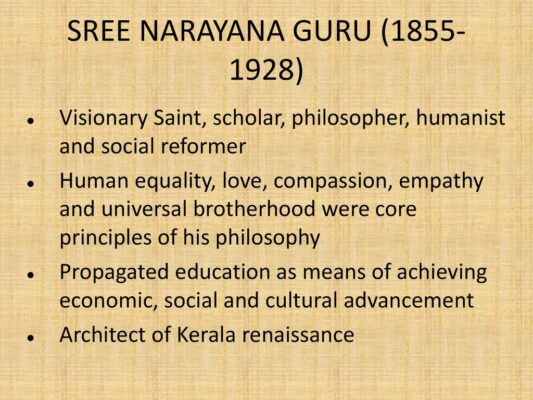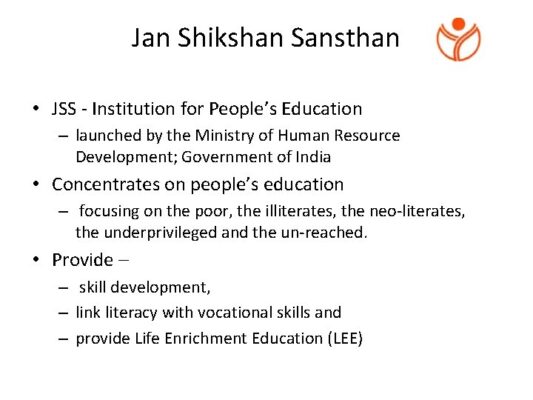- Home
- Prelims
- Mains
- Current Affairs
- Study Materials
- Test Series
24th Aug 2021
WHAT IS SHARIAH LAW, AND WHAT DOES IT MEAN FOR AFGHAN WOMEN?
Recently, the Taliban have pledged that women in Afghanistan will have rights “within the bounds of Islamic law,” or Shariah, under their newly established rule.
Shariah?





- The meaning of Sharia in Arabic is "the way".
- It does notrefer to the legal system.
- It is a broad set of moral and ethical principles derived from the Quran and the practices and maxims of Prophet Muhammad.
- It is based on the Quran, stories of the Prophet Muhammad’s life and the rulings of religious scholars, forming the moral and legal framework of Islam.
- The Quran details a path to a moral life, but not a specific set of laws.
- One interpretation of Shariah could afford women extensive rights, while another could leave women with few.
- The interpretations of Shariah are a matter of debate across the Muslim world, and all groups and governments that base their legal systems on Shariah have done so differently.
- Shariah lists some specific crimes, such as theft and adultery, and punishments if accusations meet a standard of proof.
- It also offers moral and spiritual guidance, such as when and how to pray, or how to marry and divorce.
- It does not forbid women to leave home without a male escort or bar them from working in most jobs.
- When the Taliban controlled Afghanistan from 1996 to 2001, they banned television and most musical instruments.
- They established a department for the Promotion of Virtue and the Prevention of Vice based on a Saudi model.
- Restrictions on behavior, dress and movement were enforced by morality police officers, who drove around in pickup trucks, publicly humiliating and whipping women who did not adhere to their rules.
- Women accused of adultery were stoned to death.
- It included the participation of integral helicopters of the two ships and the Falcon Electronic Warfare aircraft.

- It is an annual maritime exercise between Indian Navy and Royal Navy of United Kingdom.
- It had commenced in 2004.
- It is a long-running exercise designed to test the ability of the two Commonwealth navies to operate side-by-side during war and other crunch scenarios.
- The exercise typically takes place off the namesake Konkan stretch of coastline in India which is running for 450 miles along the Western Seaboard and encompassing Mumbai and Goa.
- It aims to promote mutual understanding and provide exposure to operating procedures, communication measures and best practices.
- It allows both Navies to develop greater confidence to operate together during maritime missions.
- It is a tangible symbol of the commitment of both nations in ensuring a positive climate at sea for enhancing strategic stability and promoting economic prosperity.

- He was born on August 22, 1856 (1032 Chingam in Malayalam calendar) in a humble cottage in the pretty hamlet of Chempazhanthi near Thiruvananthapuram.
- As a child he expressed strong aversion toward the caste discrimination that existed in the society and often criticized his own relatives for showing such tendencies.
- After his elementary education he became the disciple of Raman Pillai Asan, a great Sanskrit scholar of Puthuppally Varanappally family in Central Travancore at the age of 21.
- He was a catalyst and leader who reformed the oppressive caste system that prevailed in society at the time.
- His philosophy always advocated social equality, education for all, and spiritual enlightenment.
- He consecrated the first temple of Lord Shiva in 1888 where an idol was ordinated by a non-brahmin in Aruvippuram village of Kerala.
- In 1903, he established the Sree Narayana Dharma Paripalana Yogam (SNDP) as the founder and president.
- In 1913, he founded the Advaita Ashram at Aluva.
- This Ashram was dedicated to a great principle – Om Sahodaryam Sarvatra (all men are equal in the eyes of God).
- The Sivagiri pilgrimage was established in 1924 to promote the virtues of cleanliness, education, devotion, agriculture, handicrafts, and trade.
- Sree Narayana Guru Jayanti is celebrated with great aplomb on August 23 across the state of Kerala.
- The day is also observed as a public holiday in the state to mark the birth anniversary of the social reformer.
- People celebrate this day by decorating the shrines, as well as roads with flowers and dried coconut leaves.
- Harmonious processions and community feasts are carried out in remembrance of the great guru.
- The common prayers are also organized and attended by people irrespective of caste or creed to remind people of Narayana Guru’s teachings and philosophy.
- The tribal hamlets of Palakkayam, Vettilakkolli and Ambumala got high-speed internet for the first time due to long-distance Wi-Fi technology.
- The JSS’s technical partner C4S provided support for the long-distance Wi-Fi on 5GHz frequency.
- With the help of five towers, 100-mbps internet is made available at Palakkayam, Ambumala, and Vettilakkolli hamlets in Chaliyar grama panchayat.
- The high-speed internet could be provided even up to 100 km without any transmission loss using long-distance Wi-Fi technology.

- It is formerly known as Shramik Vidyapeeth.
- It is a unique creation of Government of India which is being implemented through NGOs in the country since 1967.
- It was renamed as Jan Shikshan Sansthan in 2000.
- It was transferred from Ministry of Education (erstwhile Ministry of Human Resource Development) to Ministry of Skill Development & Entrepreneurship in July, 2018.
- It is implemented through NGOs with 100% grants from the Government of India.
- JSS are registered under the Societies Registration Act, 1860
- The affairs of Jan Shikshan Sansthan are managed by respective Board of Management approved by the Government of India.
- To enhance occupational skills and technical knowledge of the neo-literates and individuals having basic school education.
- To raise efficiency, increase productive ability and enhance their livelihood opportunities.
- To identify and assist traditional skills in the district through skilling/upskilling.
- To create master trainers who are eligible to work in a department/agency of skill development through training and orientation programmes.
- To collaborate and coordinate with other departments/agencies who are working in the field of skill development.
- To widen the range of knowledge and understand the social, economic and political systems and creating environmental awareness.
- To promote national values and align with national programmes.
- To promote self-employment and facilitate financial support, including loans for the target group through linkage with credit and consortium membership.
- It aims to provide vocational training to non-literates, neo-literates as well as school drop-outs in rural regions by identifying skills that have a relevant market in that region.
- Its objectives is to uplift this rural population economically by imparting essential skills training, thereby enabling local trades to grow and creating new opportunities for the natives of the region.
- Its mandate is to provide vocational to persons with rudimentary level of education upto 8th and school drop-outs upto 12th standard in the age group of 15-45 years.
- The priority groups are women, SC, ST, minorities and other backward sections of the society.
- Identify precise target areas and groups by developing socio-economic profiles.
- Identity and ascertain educational and vocational needs of different categories to clientele groups.
- Explore, innovate and try new approaches to meet the requirements of different groups through programmes based on national educational training.
- Manage the training and orientation of resource individuals/instructors involved in the planning and implementation of various agreements.
- Render consultancy services to agencies and enterprises that are planning to organise programmes for training and vocational education of similar target groups.
- Promote organisation like co-operative societies, manuals and associations of women, youth and workers to undertake collective activities for socio-economic development.
- Provide follow-up services to the beneficiaries of JSS.
- The organisation has to be registered for a minimum period of three years at the time of application.
- It must have a proper Constitution Memorandum or Articles of Association.
- It has to have a properly constituted Managing/Governing Body with its powers and duties mentioned in its constitution.
- It should have experience in the field of formal/non-formal education, Skill Development, adult education, vocational training, development and community development.
- It must have been through a financial audit for the last three years.
- It must maintain a report for the last three years.
- It is amongst the top religious attractions in Srinagar dedicated to Lord Shiva.
- It is named after the great philosopher Shankarcharya, who once visited Kashmir.
- It is on top of the Shankaracharya Hill (also called Hill of Solomon) on the Zabarwan Mountain in Srinagar, Kashmir.
- The Hindu temple enjoys a strategic location from where devotees and tourists can see a panoramic view of Srinagar City.
- It is also known as Jyeshteshwara Temple.
- It is accessible by a staircase of 243 steps and is visited by a large number of Hindu devotees during the Amarnath Yatra season.
- The temple dates to 200 BC, although the present structure probably dates to the 9th century AD.
- It was visited by Adi Shankara and has ever since been associated with him; this is how the temple got the name Shankaracharya.
- It is also regarded as sacred by Buddhists.
- Some historians report that the temple was actually a Buddhist temple during the Buddhist era which was then changed into Hindu site of worship by Adi Shankaracharya.
- Persians and Jews call it Bagh-i-sulaiman or the Garden of King Solomon.
- According to Pandit Anand Koul (1924) the temple was originally built by the Hindu king “Sandiman” who, according to Koul, reigned in Kashmir from 2629 to 2564 BC.
- It was repaired by King Gopaditya (426–365 BC) and by King Lalitaditya (697–734 A.D.).
- Zain-ul-Abidin repaired its roofwhich had tumbled down by earthquake.
- Sheikh Ghulam Mohi-ud-din,a Sikh Governor (1841–46), also repaired its dome.
- Shankaracharya Temple has a 20-foot tall octagonal base that supports the square building. Inside the temple, there is a small and dark chamber which is circular.
- The ceiling is supported by four octagonal pillars that surround a basin where the Shivalinga encircled by a snake is established.
- It has a high octagonal platform supporting, approached by a flight of approximately 100 steps.
- The main surviving shrine of the temple is consisting of a circular cell.
- The interior of the sanctum is covered by a ply board ceiling concealing the flat sandstone slabs which are supported by two lintels bearing the load on four eight-sided column of stone in the centre.
- It is a Geospatial Planning Portal meant for facilitating Gram Panchayat Level planning of MGNREGA activities across India.
- It is aptly named as word ‘Yukt’ is derived from Yojanam, the planning and ‘Dhara’ indicates the flow.
- It is a culmination of untiring joint efforts of ISRO and Ministry of Rural development made towards realizing a G2G service for rural planning in support of decentralized decision making.
- Yuktdhara based plans will be prepared by grassroot functionary and verified by appropriate authorities for relevance and resource allocation.
- It will facilitate planning of new MGNREGA assets using Remote Sensing and GIS based information.
- It will serve as a repository of assets (Geotags) created under various national rural development programmes i.e. MGNREGA, Per Drop More Crop and Rashtriya Krishi Vikas Yojana etc., along with field photographs.
- It integrates wide variety of thematic layers, multi-temporal high resolution earth observation data with analysis tools.
- The planners will analyse previous assets under various schemes and facilitates identification of new works using online tools.
- It is the national Geo-portal developed and hosted by ISRO comprising of Geo Spatial Data, Services and Tools for Analysis.
- It has many versatile features such as:
- Visualization of Satellite Imagery and Maps;
- Analysis;
- Free Data Download; and
- Download Reports to name a few
- The Satellite Imageries are of Multi-sensor, Multi-platform and Multi-temporal in nature can be visualized in 2D and 3D.
- Varieties of thematic maps are also hosted for analysis of various natural resources themes.
- Bhuvan platform supports many applications that address Governance and other Geo Spatial applications that are being used by the Central and State Governments Departments, Academia and Industry.









 Latest News
Latest News
 General Studies
General Studies